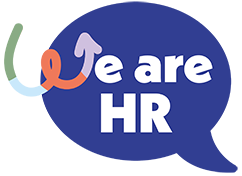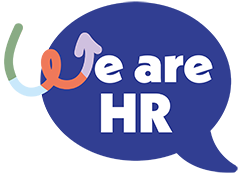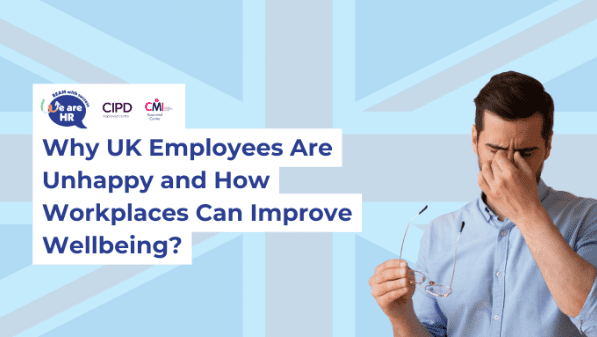Table Of Contents
Gallup’s latest State of the Global Workplace report, published in April 2025, has revealed a stark reality: UK employees are the second saddest in Europe, with only Northern Cyprus ranking lower. The data paints a worrying picture of high stress, low engagement, and rising levels of daily sadness in the British workforce.
As employee wellbeing becomes a central topic in organisational performance and culture, it’s time to understand the root causes and, more importantly, what employers, HR professionals, and employees themselves can do to address them.
UK Workers Rank Low on Happiness and Engagement
Gallup’s findings show that:
- 26% of UK workers feel sad on a daily basis
- Only 10% are engaged in their work, among the lowest in Europe
- 41% report daily stress, surpassing even war-affected regions
- 17% experience loneliness, particularly among remote workers
These are more than just numbers. They reflect a broader issue affecting team morale, productivity, retention, and mental health across UK workplaces.
What’s Behind the UK’s Workplace Unhappiness?
Several key factors are contributing to the rising levels of unhappiness among UK employees:
1. Lack of Engagement
Many employees feel disconnected from their work and company goals. This disconnect often stems from a lack of recognition, unclear roles, or uninspiring leadership.
2. Poor Work-Life Balance
The always-on culture, especially in hybrid or remote roles, blurs the boundaries between work and personal life. This increases stress and makes it harder to properly switch off.
3. Inadequate Mental Health Support
While awareness around mental health has improved, access to meaningful support is still lacking in many organisations.
4. Limited Career Progression
Employees who don’t see a path for growth or development often feel stuck, which directly impacts motivation and morale.
5. Loneliness and Isolation
Post-pandemic work models have left many employees without regular social interaction. For some, especially those working remotely full-time, this leads to feelings of disconnection.
The Cost of Doing Nothing
Unhappy employees don’t just suffer personally; their disengagement has real business consequences. Gallup estimates that disengaged employees cost the UK economy up to £257 billion per year in lost productivity.
Low morale contributes to higher absenteeism, increased turnover, poor customer experiences, and slower business growth. In short, this isn’t just an HR issue; it’s a leadership and performance issue too.
How Workplaces Can Improve Employee Wellbeing
While the stats are sobering, the good news is that there are clear, actionable steps organisations can take.
1. Supportive Leadership
Train managers to lead with empathy and emotional intelligence. When employees feel heard and valued, engagement naturally increases.
2. Flexible Working Options
Give employees more control over where and when they work. Flexible hours and hybrid models that actually suit individuals can reduce stress and improve work-life balance.
3. Recognition and Rewards
Acknowledging achievements, no matter how small, helps employees feel appreciated. Recognition doesn’t always have to be monetary; it can be a public shout-out or a thank-you note.
4. Open Communication Channels
Foster a culture where feedback is encouraged and acted upon. Transparent communication helps build trust and psychological safety.
5. Access to Mental Health Resources
Offer employee assistance programmes (EAPs), counselling sessions, mental health days, or workshops that address stress, anxiety, and burnout.
What HR Professionals Can Do
HR teams are key drivers of wellbeing strategy. Here’s how they can lead the change:
- Conduct regular pulse surveys to track employee mood and identify problem areas
- Develop wellbeing policies that include mental, emotional, and financial support
- Create development plans so employees can see a clear path forward
- Champion inclusivity and belonging, making sure everyone feels represented and supported
- Review workloads and resourcing to avoid chronic overwork
What Employees Can Do
Wellbeing is also a personal journey. Here are a few actions employees can take:
- Set clear boundaries between work and personal life
- Talk to your manager or HR if you’re feeling overwhelmed; support is there
- Make time for breaks and rest throughout the day
- Use company resources like mental health apps, wellbeing webinars, or support groups
- Seek connection, even if working remotely; schedule a virtual coffee or team check-in
Final Thoughts
The UK’s workplace unhappiness is a growing concern, but it’s also a chance for organisations to reset. By prioritising wellbeing, improving leadership, and encouraging open dialogue, employers can not only reduce sadness and stress but also build more engaged, resilient teams.
The path to a happier workforce doesn’t require grand gestures. Often, it starts with a simple question: How are you, really?
Support at We-are-HR
At We-are-HR, we recognise that wellbeing is the foundation of performance, learning, and long-term success. That’s why we have a dedicated Wellbeing Lead who offers support to both learners and employees. Whether you’re feeling overwhelmed, disconnected, or simply need someone to talk to, we’re here to help you thrive.
We’re more than a training centre; we’re your partner in professional growth. As an official CIPD provider, we offer expert guidance, personalised support, and flexible course formats to help you succeed, wherever you are in your career.
📞 Talk to our advisors today on 020 3740 0757 to discover which CIPD level suits you best.


